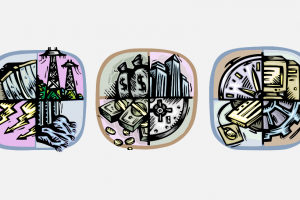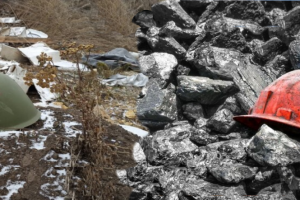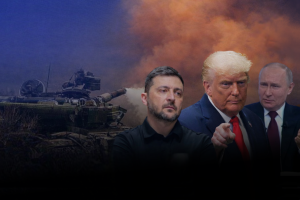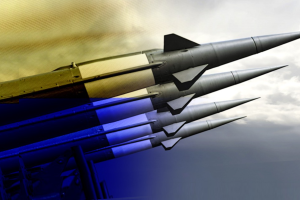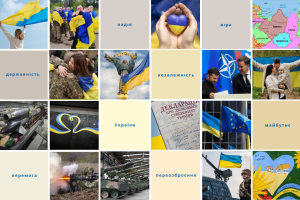A national survey conducted by the Democratic Initiatives Foundation and Razumkov Center sociological service from 14th to 19th of May 2021 in all regions of Ukraine with exception of Crimea and occupied territories of Donetsk and Luhansk oblasts. The sample represents adult population according to main socio-demographic characteristics. The survey was conducted by face-to-face interviews. 2020 respondents 18 years of age and older were surveyed. The theoretical error of the selection does not exceed 2.3%.
The Foundation’s and the Center’s early July 2020 nationwide poll data is used for comparison. 2022 respondents were surveyed, aged 18 and older across all regions of Ukraine with exception of Crimea and occupied territories of Donetsk and Luhansk oblasts. The theoretical error of this selection (omitting the design-effect) does not excel 2.3% with a probability of 0.95.
The mentioned surveys were financed within the framework of the MATPA project of the Dutch Embassy.
Public Trust: The National Police and Security Service of Ukraine are losing their ground, Sytnyk’s (NABU) and Avakov’s (MVS) ratings are growing.
The balance of trust (difference between trust and distrust figures; figure is positive if trust is higher and negative if distrust is higher) of all law enforcement agencies remains negative. In the last ten months, since July 2020, balance of trust toward the National Police and the Security Service of Ukraine (SBU) has deteriorated from -25% to -31% for both.
Balance of trust has slightly improved for the Ministry of Internal Affairs (from -46% to -43%), the State Bureau of Investigations (-47% to -43%), the Prosecutor’s Office (-58% to -52%), Specialized Anti-Corruption Prosecutor’s Office (-60% to -52%). The best positive dynamics of trust/distrust is observed in case of the National Anti-Corruption Bureau: the balance improved from -59% to -49%.
Majority of Ukrainians negatively assess law enforcement services’ work. Notably, in 2021 the ratings of SBI Director and SAP Head were not measured because both agencies did not have appointed CEOs.
However, over the last 10 months, there were significant changes in the positive/negative assessment of work of the various services’ directors. The balance of approval is a difference between positive and negative assessment. If balance is positive (+x%) then positive assessment is bigger; if balance is negative (-x%) it means that the negative assessment dominates.
- The public approval of the NABU director, Artem Sytnyk’s actions showed the best positive dynamic. From July 2020, his rating balance has grown from -41% to -35%.
- Arsen Avakov’s approval rating also increased: the balance has changed from -52% to -48%. However, Avakov has the lowest approval rating among other directors of the enforcement agencies and ministries.
- Head of SBU Ivan Bakanov has the best balance of assessment. However, over the last 10 change of the balance has exceeded a survey error: from -30% in 2020 to -27% in 2021.
- Approval of Prosecutor General, Iryna Venediktova remained the same: -39%.
Breaking down the survey’s result’s analysis into different categories (macro regions, age, wealth, respondents’ political standings) allows us to make certain observations:
- Wealthier respondents tend to show more trust in the law enforcement agencies than poorer respondents do.
- Residents of the southern regions and Zelensky’s voters tend to trust the Ministry of internal affairs more often and better assess Avakov’s actions.
- “Sluga Narodu” constituents (51%), respondents from the southern regions, and wealthier respondents tend to trust the National Police more than others.
- Respondents form the southern and eastern regions demonstrate the highest distrust toward the Prosecutor’s Office. However, respondents from the central regions and “Sluga Narodu” constituents express positive opinions towards General Prosecutor Venediktova’s actions.
- NABU enjoys trust among respondents from the western and central regions, Zelensky’s (30%) and Porshenko’s (20%) voters.
Analytical comment:
Deterioration of trust toward SBU and the National Police could be a public reaction to engagement of these agencies in suppressing protests against conviction of civil activists and corruption in the executive branch which happened in Ukraine in February-March 2021.
At the same time, the research showed a decrease in the distrust towards NABU (considering the practically identical number of “undecided” in 2020 and 2021). This change can be explained by the media coverage of the anticorruption cases and attempts of political parties to limit NABU independence through either Constitutional court ruling or amendments to the laws.
A comparison of the trust dynamics and approval ratings over the past 10 months shows that the Office of Prosecutor General has the worst trust/distrust balance despite certain positive changes in public opinion. An unchanged assessment of the General Prosecutors Office could be a result of insufficient work with media or lack of significant actions. In particular, the survey points to the urgency of prosecutors’ work assessment in the southern and eastern oblasts to renew the trust in the state.
Trust in the law enforcement agencies could be hindered by the state of the economy. The more well off parts of the society see these institutions as a prerequisite for security and stability. Given a continuation of law enforcement reform and improvement of overall wealth the trust in the former will rise.
For the last two years, research has been pointing out the connection between voting for Volodymyr Zelensky and “Sluga Narodu” and higher levels of approval of the law enforcement agencies’ leaders. This could mean that many citizens see the president as “Commander” of law enforcement agencies and expect that they will implement President’s political decisions. This creates a risk of politicizing the security officers and risk for approval of president if law enforcement agencies break the law.
Evaluating security and order amid COVID-19 pandemic: Ukrainians are feeling safer.
Public opinion on the state of security and civil order has not changed significantly over the last 10 months (July 2020 to May 2021). In spite of the many risks associated with the pandemic and the recession, many respondents claim they do not see significant worsening of affairs. Moreover, the number of those who think that security deteriorated decreased from 44% in 2020 to 38% in 2021. At the same time, there is modest improvement of public assessment of the security and order in the communities and neighborhoods.
Analysis of the survey data (by macro regions, age, material wealth, political opinions) allows us to make the following observations:
- The security situation in the country is viewed pessimistically by the residents of the biggest cities (with 1,000,000+ population), people from the small towns and respondents from the southern regions.
- Similarly, residents of biggest cities are complaining about the worsening of the security situation and order in their communities and close to their homes.
- Voters of “Sluga Narodu” tend to assess the security situation in the country more positively.
Analytical comment:
When compared with 2020, perception of security and order in the different macro regions became similar. If a year ago, one could observe significant concerns regarding security and order in the eastern and southern regions, then in 2021 these concerns have somewhat decreased.
Improvements in security and civil order perception really stand out against the declining trust in the National Police, which is responsible for lawfulness in the streets. This serves as a follow-up argument for the assumption that this decline is a consequence of using police force during the civil protests. Despite this, as we will show in the next chapter, crimes against life and property of other citizens and against judicial immunity are still part of the agenda.
Crime in 2021: epidemic of crimes against private property and tide of the heavy crimes.
In 2021, the polled citizens outlined several types of crimes, committed in their communities, that require urgent action from the police: spread and abuse of drugs (39%), driving under alcohol/drug intoxication (36%), hooliganism (31%), burglary (31%), corruption of officials and authorities (24%), fraud (23%), stealing in public places (18%).
Although the list of top-10 crimes has not changed over the last 10 months, increasing reference of the following crimes is gaining more and more attention.
- Burglary – from 25% to 31%.
- Illegal economic activity – from 12% to 17%.
- Production and sales of low-quality pharmaceuticals and food – from 11% to 14%.
- Unpaid labor – from 7% to 13%.
- Illegal lay-offs of hired workers – from 7% to 10%.
Increased references of violent crimes such as murder – from 6% to 9% and rape – from 2% to 6% are especially alarming. However, the sample size does not allow to make valid observations about locations or communities where heavy crimes are on the rise.
In the regional dimension one can notice the following tendencies:
- Spread and abuse of drugs was mostly noticed by residents of the biggest cities (66%), small towns in rural areas (51%, maybe these town communities are located close to the biggest cities), and in the southern regions (57%).
- Burglary was mostly reported in medium-sized and large cities (100,000+ residents) (43%) and the East (49%).
- Residents of the eastern and southern regions (28% and 30% respectively) are mostly concerned with fraud.
- Stealing in public was mostly reported by residents of small cities (26% in cities with under 50,000 residents) and in the southern regions (25%).
- Illegal economic activity – from 12% to 17%.
- Production and spread of low-quality pharmaceuticals and provision – from 11% to 14%.
- Not being paid for their labor were mostly residents of small cities (under 100,000 residents) – 24% and from the Eastern regions.
- Respondents form large cities have reported being illegally fired from work (13%).
When answering a question about efficiency of the police actions against the crimes, 20% said police effectively fights with hooliganism, 12% admitted progress in prosecuting intoxicated driving. 22% of the polled believed that law enforcement agents cannot tackle any issue and 37% could not answer.
Overall, on the national level, the biggest gaps between a stated urgency of the crimes and assessment of efficiency of police actions could be observed in the following:
- Spread and use of drugs (39% consider this a serious issue, only 5% report law enforcement success in combating this crime).
- Intoxicated driving (36% consider the problem important, only 12% report successful tackling thereof).
- Corruption (24% consider the problem important, only 2% report successful tackling thereof).
- Fraud (23% and 5% respectively).
- Armed assault (10% and 4% respectively).
In must be said that in 2021 a gap between public perception of urgency of such crimes as drug abuse and spread, intoxicated driving and corruption and public assessment of police actions to fight with the same crimes became deeper. The same picture is observed in cases of Illegal economic activity (logging, mining) (17% and 3% respectively) and production and spread of low-quality pharmaceuticals and food (14% and 3% respectively).
Analytical comment:
Just as 10 months ago, in May 2021 the residents of the eastern regions showed the biggest concerns about the spread of crimes. Most possibly, the pandemic has increased the number of reports about urgency of certain crimes against private property.
Despite significant financial investments into law enforcement, there are no noticeable positive changes except for tackling hooliganism.
Furthermore, people believe that law enforcers are losing the ability to counter the most reported crimes. Such state of affairs, in the long run, will create demand for change of leadership in the law enforcement agencies.
Public opinion on legitimacy of violence: police and protesters
After the police and the National Guard clashed with the protesters in Kyiv who, in February and March 2021, demanded to stop judicial repression of civic activists and prosecute corrupted judges, DIF decided to conduct a test questionnaire to find out what Ukrainians think of use of force on behalf of the police and the protesters.
These questions are experimental. Thus, we urge to perceive poll results as the first approach to the complex problem of legitimacy of police use of force and the people’s rights, as a source of power, to rebel against tyranny.
These questions are crucial to understand the limits of public support for the government’s actions in a crisis. We hope this could give the government an understanding of the responsibility when choosing response to the mass protests.
Urgency of this theme is driven not only by the recent protests in Ukraine but also by worldwide resistance to quarantine measures, unpopular economic reforms, and disagreement with results of elections.
Having this in mind, we asked the respondents four questions, dividing them into two categories:
- Citizens’ opinion on the legitimacy of the right to use force and special police equipment.
- Citizens’ opinion on conditions required for a law enforcer to use firearms.
- Citizens’ opinion on use of force during protests.
- Citizens’ opinion on the right to armed revolt.
Despite law enforcement during protests and riots is done not by only the National Police but also by the National Guard, SBU and in special cases – other power structures, we will continue to use the generalizing term “police”.
Grounds for use of force by the police: self-defense and defense of fellow citizens
According to the poll results, the proposed grounds for use of force by police could be divided into three groups:
- People may support use of force by the police when the protesters are attacking other citizens (33%) or attack the police first (29%).
- People can also understand use of force by the police when the protesters attack private property (21%) or block military bases (20%). Following the same logic, the citizens understand forced clearing of protester-occupied administrative buildings (17%), but such actions will not be perceived as completely legitimate and excused.
- The public will perceive as unacceptable police violence against people if police attack protesters who block roads and streets (3%), highways, bridges, railways (7%). Inexcusable would also be a respective authorized order from the commanders (7%). It is an important indicator of the public opinion, although there were no sentences against police officers who attacked Maidan protesters in 2013-2014.
Overall, over 31% of surveyed believe the police should not use force against people under any circumstances. Two thirds of them think that the protesters should not use force against the police members. Both opinions are common for women and people over 50 years. Such respondents tend to favor Volodymyr Zelensky and “Sluga Narodu”.
Subsequently, there exists a significant and, maybe, stable number of citizens that does not consider violence as a tool used for resolving public problems, value stability, but do not support the government which oppresses the rights of others.
Firearms in the hands of the police: an ultimate measure that must be avoided
43% of respondents completely oppose use of firearms against protesters under any circumstances. 26% think that law enforcers have every right to return-fire at protesters who attacked with firearms first, 20% will allow use of firearms during the mass protests, which happen under the martial law, or other state of emergency.
Overall, Ukrainians would not support such actions of law enforcers. Of course, much depends on the nature of the protest, actions, and demands of the protesters themselves. This is evident from the next two answers.
Right to armed revolt: the active minority remains the responsible minority.
Most of respondents believe that protesters have no right to violence (38%) or have no opinion on this matter.
At the same time, 27% believe that protesters always have the right to self-defense against violence directed at them. 22% are assured this is the case once the police use force first.
If we dissect those who share the thought of using violence as an answer to aggression from fans of the absolute right, we get 20% of respondents who would support the protesters against the police at all times.
This could the most active part of the society willing to protest themselves. This is partially supported by another observation: most of them support Ukraine’s integration into the EU.
Since Ukraine is far away from the European judicial standards, these people see their security as their own responsibility. The same citizenry will become a major pillar of society if a government decides to be consistent in introducing reforms that bring Ukraine closer to the EU.
The question of right to an armed revolt is a different matter: 36% believe this right arises only in the case of foreign invasion and occupation. However, between 20% and 25% believe the citizens have all the rights to take up arms to oppose state traitors or crimes done by the state, dictatorship, or mass human rights violations.
The government’s direct responsibility is preclusion of such crises and development of tools to end them in a rightful way. We are talking about dissolution of the Verkhovna Rada, presidential impeachment and a warrant of an independent judicial system. Achieving these goals is hard, but much safer than forcing the people into taking up radical measures.
Survey results
Please, tell us, do you trust the following law enforcement institutions?
| Do not trust at all | Mostly do not trust | Mostly trust | Completely trust | Hard to say | Trust/Distrust Balance |
Ministry of Internal Affairs | 25,1 | 40,5 | 21,4 | 1,6 | 11,5 | -42.6 |
National Police of Ukraine | 23,6 | 37,0 | 27,7 | 2,2 | 9,5 | -30.7 |
Prosecutors Office of Ukraine | 33,1 | 36,5 | 16,1 | 1,4 | 12,8 | -52.1 |
Specialized Anticorruption Prosecutor’s Office | 34,0 | 32,1 | 13,3 | 1,0 | 19,5 | -51.8 |
National Anticorruption Bureau | 34,2 | 30,8 | 14,8 | 1,3 | 18,9 | -48.9 |
Security Service of Ukraine | 27,0 | 29,1 | 23,2 | 2,3 | 18,4 | -30.6 |
National investigation Bureau | 29,3 | 31,0 | 16,4 | 1,2 | 22,2 | -42.7 |
Trust/Distrust Balance for 2020-2021.
| Trust/Distrust Balance, July 2020 | Trust/Distrust Balance, May 2021 |
National police of Ukraine | -24,9 | -30,7 |
Security Service of Ukraine | -24,7 | -30,6 |
Ministry of Internal Affairs | -46,3 | -42,6 |
National investigation Bureau | -47,3 | -42,7 |
Prosecutors Office of Ukraine | -58,0 | -52,1 |
National Anticorruption Bureau | -58,7 | -48,9 |
Specialized Anticorruption Prosecutor’s Office | -59,9 | -51,8 |
How would you assess the work of following chiefs of law enforcement agencies?
| Highly Negatively | Mostly Negatively | Mostly Positively | Highly positively | Do not know him/her | Hard to Say |
Arsen Avakov (Ministry of Internal Affairs) | 26,2 | 40,5 | 17,2 | 1,7 | 3,6 | 11,0 |
Ivan Bakanov (Security Service of Ukraine) | 19,1 | 23,7 | 14,2 | 1,3 | 26,6 | 15,1 |
Iryna Venediktova (General Prosecutor’s Office) | 23,3 | 30,5 | 12,8 | 1,8 | 18,8 | 12,8 |
Artem Sytnyk (National Anticorruption Bureau) | 22,1 | 26,5 | 12,1 | 1,1 | 22,3 | 15,9 |
Positive/Negative assessment balance for 2020-2021.
| Positive/Negative assessment balance, July 2020 | Positive/Negative assessment balance, May 2021 |
Arsen Avakov (Ministry of Internal Affairs) | -52,3 | -47,8 |
Ivan Bakanov (Security Service of Ukraine) | -29,9 | -27,3 |
Iryna Venediktova (General Prosecutor’s Office) | -39 | -39,2 |
Artem Sytnyk (National Anticorruption Bureau) | -40,6 | -35,4 |
Positive/Negative assessment balance among “Sluga Narodu” voters for 2020-2021.
| Positive/Negative Rating Balance among “Sluga Narodu” voters, July 2020 | Positive/Negative Rating Balance among “Sluga Narodu” voters, May 2021 |
Arsen Avakov | -26.9 | -2.9 |
Ivan Bakanov | -16.2 | 15.4 |
Iryna Venediktova | -8.5 | 10.9 |
Artem Sytnyk | -21.8 | -6.5 |
Arsen Avakov (Ministry of Internal Affairs
| West | Center | South | East | Ukraine |
Negatively (Highly Negatively + Mostly Negatively) | 67,2 | 62,2 | 55,4 | 77,4 | 66,7 |
Positively (Highly Positively + Mostly Positively) | 15,1 | 21,8 | 30,9 | 12,7 | 18,9 |
Hard to say | 12 | 12 | 11,2 | 8,4 | 11 |
Do not know him/her | 5,6 | 4 | 2,4 | 1,5 | 3,6 |
| Sluga Narodu | Opposition Platform for Life | European Solidarity | Bat’kisvshchyna | Ukraine (country) |
Negatively (Highly Negatively + Mostly Negatively) | 43,7 | 77,3 | 71,1 | 69 | 66,7 |
Positively (Highly Positively + Mostly Positively) | 40,8 | 15,6 | 18,5 | 16,8 | 18,9 |
Hard to say | 11,7 | 6,1 | 8,8 | 13,1 | 11 |
Do not know him/her | 3,8 | 1,1 | 1,6 | 1,2 | 3,6 |
Ivan Bakanov (Security Service of Ukraine)
| West | Center | South | East | Ukraine |
Negatively (Highly Negatively + Mostly Negatively) | 36,2 | 39,8 | 40,9 | 54 | 42,8 |
Positively (Highly Positively + Mostly Positively) | 15,5 | 15,7 | 27,8 | 9,6 | 15,5 |
Hard to say | 15,7 | 16 | 16,2 | 12,8 | 15,1 |
Do not know him/her | 32,6 | 28,4 | 15,1 | 23,7 | 26,6 |
| Sluga Narodu | Opposition Platform for Life | European Solidarity | Bat’kisvshchyna | Ukraine (country) |
Negatively (Highly Negatively + Mostly Negatively) | 21,1 | 59,6 | 52 | 34,6 | 42,8 |
Positively (Highly Positively + Mostly Positively) | 36,6 | 12,6 | 14,3 | 10,8 | 15,5 |
Hard to say | 17 | 9,9 | 13 | 14,6 | 15,1 |
Do not know him/her | 25,4 | 17,8 | 20,7 | 39,9 | 26,6 |
Iryna Venediktova (General Prosecutor’s Office)
| West | Center | South | East | Ukraine |
Negatively (Highly Negatively + Mostly Negatively) | 45 | 52,1 | 56,2 | 63,1 | 53,8 |
Positively (Highly Positively + Mostly Positively) | 13,8 | 17,9 | 16,8 | 9,8 | 14,6 |
Hard to say | 14 | 10,9 | 17,2 | 12,6 | 12,8 |
Do not know him/her | 27,2 | 19,2 | 9,8 | 14,5 | 18,8 |
| Sluga Narodu | Opposition Platform for Life | European Solidarity | Bat’kisvshchyna | Ukraine (country) |
Negatively (Highly Negatively + Mostly Negatively) | 29,1 | 68,9 | 72,1 | 55,9 | 53,8 |
Positively (Highly Positively + Mostly Positively) | 40 | 11 | 9,2 | 8,1 | 14,6 |
Hard to say | 14,4 | 8,8 | 6,8 | 9,5 | 12,8 |
Do not know him/her | 16,5 | 11,4 | 11,9 | 26,4 | 18,8 |
Artem Sytnyk (National Anticorruption Bureau)
| West | Center | South | East | Ukraine |
Negatively (Highly Negatively + Mostly Negatively) | 32,2 | 45,1 | 61,3 | 62,6 | 48,6 |
Positively (Highly Positively + Mostly Positively) | 17,9 | 17,3 | 9,2 | 5 | 13,2 |
Hard to say | 19,8 | 15,7 | 13,3 | 13,8 | 15,9 |
Do not know him/her | 30,1 | 21,9 | 16,2 | 18,6 | 22,3 |
| Sluga Narodu | Opposition Platform for Life | European Solidarity | Bat’kisvshchyna | Ukraine (country) |
Negatively (Highly Negatively + Mostly Negatively) | 33 | 68,1 | 47,6 | 43,2 | 48,6 |
Positively (Highly Positively + Mostly Positively) | 26,5 | 6,5 | 15 | 14,5 | 13,2 |
Hard to say | 17,2 | 10,4 | 22,8 | 10,4 | 15,9 |
Do not know him/her | 23,3 | 14,9 | 14,5 | 31,9 | 22,3 |
How do You feel have security and civil order changed over the last 12 months?
| Significant positive changes | Moderate positive changes | Practically has not changed | Moderate negative changes | Significant negative changes | Hard to say |
In the Country overall | 0,9 | 10,2 | 43,1 | 24,1 | 13,5 | 8,1 |
In Your city (town, village) | 1,7 | 13,5 | 56,4 | 18,4 | 5,0 | 5,0 |
Close to Your residency (micro district, neighborhood) | 2,2 | 13,3 | 60,8 | 13,5 | 4,8 | 5,4 |
Security and civil order rating dynamics (July 2020 - May 2021)
| Positive changes | No changes | Negative changes | Hard to say |
In the Country overall, July 2020 | 9,3 | 42,6 | 43,5 | 4,6 |
In the Country overall, May 2021 | 11,1 | 43,1 | 37,6 | 8,1 |
In Your city (town, village), липень 2020 | 11,7 | 59,3 | 25,3 | 3,6 |
In Your city (town, village), May 2021 | 15,2 | 56,4 | 23,4 | 5 |
Close to Your residency (micro district, neighborhood), July 2020 | 11,0 | 64 | 20,7 | 4,3 |
Close to Your residency (micro district, neighborhood), May 2021 | 15,5 | 60,8 | 18,3 | 5,4 |
Which of the following crimes in your community require immediate attention from internal affairs establishment (police)? (Choose no more than 5 positions)
Which of the following crimes are more-or-less successfully combated by police in your community? (Choose any number of positions)
| Require immediate attention | Are successfully combated |
Hooliganism | 31,9 | 19,6 |
Spread and abuse of drugs | 39,0 | 5,4 |
Intoxicated driving | 35,7 | 12,3 |
Public stealing | 18,9 | 6,7 |
Burglary | 31,2 | 5,1 |
Armed assault | 9,9 | 4,4 |
Fraud | 23,3 | 4,6 |
Racketeering | 6,4 | 2,1 |
Persecution of certain nationalities, religious communities | 2,3 | 4,0 |
Bank, Gas Station robberies | 2,9 | 2,8 |
Prostitution | 4,1 | 2,6 |
Murder | 8,7 | 3,3 |
Rape | 4,6 | 2,1 |
Human trafficking/smuggling | 2,7 | 2,8 |
Illegal firing | 10,2 | 3,3 |
Unpaid labor | 12,5 | 4,9 |
Politically exposed persons, authority’s corruption | 24,0 | 1,6 |
Unsanctioned meetings | 1,8 | 2,9 |
Raiding of enterprises | 5,3 | 3,2 |
Intimidation, bribing of voters, electoral commissions during local elections | 3,8 | 4,4 |
Smuggling | 4,9 | 3,2 |
Production and spread of counterfeit pharmaceuticals and provisions | 14,2 | 2,9 |
Illegal economic activity (logging, mining) | 16,9 | 2,7 |
Other (What specifically?) _____________________________ | 1,4 | 1,4 |
There are no such problems | 12,4 | 22,1 |
Hard to say | 8,3 | 37,1 |
Which of the following issues with abiding the law in Your city (town) require emergency attention from internal affairs establishment (police)? (Choose no more than 5)
| 07.2020 | 05.2021 |
Spread and abuse of drugs | 39,6 | 39,0 |
Intoxicated driving | 37,7 | 35,7 |
Hooliganism | 37,0 | 31,9 |
Politically exposed persons, authority’s corruption | 25,0 | 24,0 |
Burglary | 25,1 | 31,2 |
Public stealing | 21,2 | 18,9 |
Fraud | 20,6 | 23,3 |
Armed assault | 12,1 | 9,9 |
Illegal economic activity (logging, mining) | 11,9 | 16,9 |
Production and spread of counterfeit pharmaceuticals and provisions | 10,6 | 14,2 |
Illegal firing | 7,4 | 10,2 |
Murder | 6,1 | 8,7 |
Unpaid labor | 6,6 | 12,5 |
Smuggling | 5,1 | 4,9 |
Racketeering | 4,8 | 6,4 |
Rape | 2,1 | 4,6 |
Persecution of certain nationalities, religious communities | 1,8 | 2,3 |
Bank, Gas Station robberies | 1,6 | 2,9 |
Prostitution | 1,3 | 4,1 |
Human trafficking/smuggling | 1,2 | 2,7 |
Unsanctioned meetings | 1,2 | 1,8 |
Raiding of enterprises | 3,0 | 5,3 |
Intimidation, bribing of voters, electoral commissions during local elections | 1,8 | 3,8 |
Other (What specifically?) _____________________________ | 1,7 | 1,4 |
There are no such problems | 9,8 | 12,4 |
Hard to say | 6,6 | 8,3 |
Which of the following crimes are more-or-less successfully combated by police in your community? (Choose any number of problems)
| 07.2020 | 05.2021 |
Hooliganism | 21,0 | 19,6 |
Spread and abuse of drugs | 7,9 | 5,4 |
Intoxicated driving | 16,3 | 12,3 |
Public stealing | 6,3 | 6,7 |
Burglary | 4,3 | 5,1 |
Armed assault | 3,5 | 4,4 |
Fraud | 4,9 | 4,6 |
Racketeering | 1,8 | 2,1 |
Persecution of certain nationalities, religious communities | 1,4 | 4,0 |
Bank, Gas Station robberies | 1,3 | 2,8 |
Prostitution | 0,7 | 2,6 |
Murder | 1,6 | 3,3 |
Rape | 0,6 | 2,1 |
Human trafficking/smuggling | 0,4 | 2,8 |
Illegal firing | 2,0 | 3,3 |
Unpaid labor | 1,5 | 4,9 |
Politically exposed persons, authority’s corruption | 3,6 | 1,6 |
Unsanctioned meetings | 1,5 | 2,9 |
Raiding of enterprises | 1,0 | 3,2 |
Intimidation, bribing of voters, electoral commissions during local elections | 1,6 | 4,4 |
Smuggling | 2,3 | 3,2 |
Production and spread of counterfeit pharmaceuticals and provisions | 1,3 | 2,9 |
Illegal economic activity (logging, mining) | 1,6 | 2,7 |
Other (What specifically?) _____________________________ | 0,6 | 1,4 |
None | 32,9 | 22,1 |
Hard to say | 27,1 | 37,1 |
Under what conditions, do You think, policemen and National Guard members have the right to use physical force, special equipment (batons, tear gas) and special vehicles (water cannons, armored vehicles) against the protesting citizens? (Choose any number)
When the protesters are blocking streets, vehicle movement in cities/towns | 3,4 |
When the protesters are blocking state driveways, bridges, or railways | 6,0 |
When the protesters are enclosing government administrative buildings | 6,2 |
When the protesters are damaging private property | 20,7 |
When the protesters are blocking military complexes | 20,0 |
When the protesters are attacking law enforcers first | 29,3 |
When the protesters are assaulting or capturing government administrative buildings | 16,5 |
When the protesters are setting up regular camps and building barricades | 7,3 |
When the protesters are attacking other citizens | 32,5 |
Other | 1,3 |
Law enforcers can always use force and special tools given a respective order is issued | 7,1 |
Under no circumstances can force be used | 30,8 |
Hard tosay | 9,7 |
Under which conditions can members of the police and the National Guard open fire on citizens protesting? (Choose any number)
Given presence of intel about possible firearms use by the protesters | 7,8 |
To return fire at the protesters | 25,7 |
As per orders (MIA, police, National Guard) | 11,9 |
At times of mass riots, martial law or state of emergency | 19,8 |
Other | 1,5 |
Under no circumstance can firearms be used on the protesters | 42,9 |
Hard to says | 10,3 |
Under which conditions can the citizens who protest use physical force? (Choose any number)
If the government isn’t listening to the peaceful protests’ requirements | 6,3 |
If law enforcers start using force against protesters | 22,1 |
Protesters always have the right to self-defense | 27,6 |
Under no circumstances can the protesters use physical force | 37,6 |
Hard to say | 17,2 |
Under which conditions do the citizens have the right to armed revolt (Choose any number)
In case of government treason or tough crimes | 25,5 |
In case of occupation by a foreign power | 35,8 |
In case of systemic human rights violations | 20,5 |
In case of revolution or dictatorship | 24,3 |
In case of quick decline in quality of life | 11,8 |
Other | 1,3 |
The citizens have no right to an armed revolt | 29,5 |
Hard to say | 13,3 |

